| Revista Umělec 2003/3 >> PIN A MEDAL ON THAT BOY (The Jindřich Chalupecký Prize) | Lista de todas las ediciones | ||||||||||||
|
|||||||||||||
PIN A MEDAL ON THAT BOY (The Jindřich Chalupecký Prize)Revista Umělec 2003/301.03.2003 Redakce | commentary | en cs |
|||||||||||||
|
"The Jindřich Chalupecký Prize was awarded to Michal Pěchouček at the end of 2003. The award, which we take great pleasure and irony in comparing to the British Turner Prize, has survived another year, though it has gone through crucial transformations in meaning for this country. Until recently, this was due to its founder Václav Havel and his close connection to the values of the regime established after the revolution in 1989. The prize was founded in 1990 and fulfilled the desire of artists to focus on mutual competition and qualities unburdened by history. And because the Czech Republic is not Great Britain and the Jindřich Chalupecký Prize is not the Turner Prize, it has remained a mere “award” without response.
But the affection of the National Gallery has evaporated and the president has become an “extraordinary” ordinary citizen. After last year’s stop over in Dům umění in Brno (publicly praised for being fresh, but in fact it marked an exit from the limelight) this year the award returned to the capital. However, it was Futura who took it in — a space which is establishing itself, but for now has only entered the consciousness of the close-knit art public. This time Václav Havel awarded the prize personally, but there’s no more: “where’s Havel? There’re crowds of people, journalists and TV crews…” The Jindřich Chalupecký Prize looks as if it’s becoming one of those prizes that springs up, supports the winner for some time, gives him some money, sets him up for a stay abroad, or at least a catalogue… but he’ll never make it out of the smoke-filled den of thieves that is the art community. The award going to Michal Pěchouček was generally accepted, although after the vague show of five finalists, Ján Mančuška was mentioned most often. Major objections included the poor media coverage, the strategy of dealing with the public and the international (!) committee’s familiarity with the long-term contributions of the finalists. We asked three personalities from the art scene here to write up their impressions of this year’s competition. Jiří Ptáček The Chalupecký Prize is now a well-trodden path, which on the one hand is good news (the continuity is important for the situation in contemporary Czech art, and at least once a year the media is required to take an interest in what’s gong on); on the other hand this brings up questions: Isn’t the apparatus moving ahead in a fairly stereotypical way? Isn’t it time to somehow radically alter the ceremony? This year’s winner, successful mesmerizer Michal Pěchouček, was selected from a strong group of contenders. Mančuška and Kintera are the best oriented artists of their generation, mixing within the international context, and they’re good at it: Šerých keeps up a high standard of quality, and his “language” is important in the current Czech context. With this kind of layout the choice of a winner is not all that important. Not one artist was the winner — all of them were… and “there’s strength in numbers.” The Chalupecký committee determines the winner in the usual way, but it would be in the interest of Czech art to present all of the finalists (especially this year’s), to work more closely with them, and more than anything, to try and promote them abroad. This kind of institution simply has no other meaning. The Czech media fails to adequately cover of prize, as it lacks genuine art critics, and “higher interests” are decidedly outside of the arts. For financial reasons, it’s impossible to crank up even the most ephemeral television campaign to make the award a more visible spectacle. But it’s possible to do without this if the main criterion is quality and a value standard is determined (what is a new and internally consistent position / approach to contemporary art?). Maybe it would be good to knock off all the “shop talk” and move on to other matters, like improving web pages (10 days after the announcement of the winner the web page hadn’t been updated and an on-line gremlin was making havoc of his name) and putting out catalogues… David Kulhánek, curator of Display Gallery In last few years it has become clear that the Chalupecký Prize is slowly, but ineluctable, moving from “official” status into the “unofficial.” The fact that two years ago it was being held in the halls of the largest Czech exhibition institution, the National Gallery, and it is now found in either Brno’s House of Art or in Prague’s Gallery Futura doesn’t mean that it has lost its dignity — but it has certainly lost its distinction. Within these limited spaces it is open to a much narrower circle of viewers, and, furthermore, this turn away from the cultural establishment — though legitimate — has caused a drain of media attention. Paradoxically, this has had a positive influence on the results of the competition. Last year’s and this year’s exhibition were much more dynamic in feeling than the tired installations on the gallery of the vestibule of Veletržní palác. The Chalupecký Award is therefore in the same position as many other local activities in the field of contemporary fine art: the constriction to “underground” status has given the show quality but stolen away public attention, which in this case signifies danger. If, because of media “invisibility,” sponsors lose interest, the contest will surely be put to pasture. Jan H. Vitvar, curator The Chalupecký’s in 2003 Unlike the past few years, when I sometimes felt that to be chosen among the finalists I only had to hand in the application form, this year’s contest also concerned those who would never enter it themselves. Maybe this “passive” form of participation was one of the strongest positives for me. The number of finalists has gone up reasonably well and their presentations have come back to Prague. Everything is going well, only I wasn’t chosen again. But it serves me right, because I haven’t put on many exhibitions in the past few years — and what else should the prize be given for? It’s not going to be for charity. I know many artists who help the blind cross the street, buy ribbons, hearts, and magazines to help the homeless... and they too get nothing. A short tally of the positives of this year’s Chalupecký prize could end with something like “all the fame and glory to the winner, and honor to the losers” but this doesn’t quite fit. My two visits to the Gallery Futura left little impression. So here I add a paragraph of criticism which might find its addressees (though that seems a long shot). The main problem is the lack of a media campaign. Though the “eyewitnesses and participants of the first years” are now young senior citizens, and the contest itself is not a new thing, it has not really entered the consciousness of the wider public. However, the question is if it is worth it. I know that it’s absurd to ask for the support of the public service media when there are so many third league football matches waiting for release, at least as re-runs. Should fine art act as resistance to sports on TV? Of course we could refer to the creation of some kind of maintenance obligation for the ideological parents of the Chalupecký prize. But can we really expect this from the person who awards the prize every year (—ed. former president Václav Havel), a man who in the very next minute lets himself be portrayed by a smut journalist? Wouldn’t it be better to use the current president to guarantee the quality of such an event? Anyway, he’ll probably start something up for over-age tennis players, so actually we should be glad that someone remembers the fine arts... There is probably nothing more to do than be happy with what we’ve got and wait till we’re 35 years old and no longer interested. Milan Salák, artist "
01.03.2003
Artículos recomendados
|
|||||||||||||
|
04.02.2020 10:17
Letošní 50. ročník Art Basel přilákal celkem 93 000 návštěvníků a sběratelů z 80 zemí světa. 290 prémiových galerií představilo umělecká díla od počátku 20. století až po současnost. Hlavní sektor přehlídky, tradičně v prvním patře výstavního prostoru, představil 232 předních galerií z celého světa nabízející umění nejvyšší kvality. Veletrh ukázal vzestupný trend prodeje prostřednictvím galerií jak soukromým sbírkám, tak i institucím. Kromě hlavního veletrhu stály za návštěvu i ty přidružené: Volta, Liste a Photo Basel, k tomu doprovodné programy a výstavy v místních institucích, které kvalitou daleko přesahují hranice města tj. Kunsthalle Basel, Kunstmuseum, Tinguely muzeum nebo Fondation Beyeler.
|







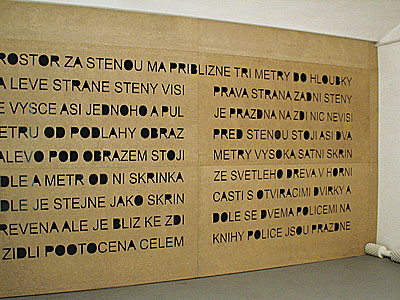















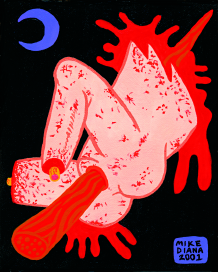




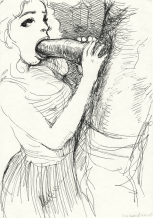
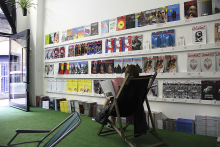

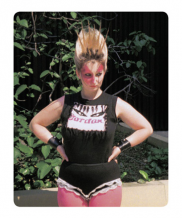


 New book by I.M.Jirous in English at our online bookshop.
New book by I.M.Jirous in English at our online bookshop.
Comentarios
Actualmente no hay comentariosAgregar nuevo comentario